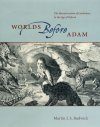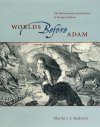About this book
In the late eighteenth and early nineteenth centuries, scientists reconstructed the immensely long history of the earth – and the relatively recent arrival of human life. The geologists of the period, many of whom were devout believers, agreed about this vast timescale. But despite this apparent harmony between geology and Genesis, these scientists still debated a great many questions: Had the earth cooled from its origin as a fiery ball in space, or had it always been the same kind of place as it is now? Was prehuman life marked by mass extinctions, or had fauna and flora changed slowly over time?
The first detailed account of the reconstruction of prehuman geohistory, Martin J. S. Rudwick's Worlds Before Adam picks up where his celebrated Bursting the Limits of Time leaves off. Here, Rudwick takes readers from the post-Napoleonic Restoration in Europe to the early years of Britain's Victorian age, chronicling the staggering discoveries geologists made during the period: the unearthing of the first dinosaur fossils, the glacial theory of the last ice age, and the meaning of igneous rocks, among others. Ultimately, Rudwick reveals geology to be the first of the sciences to investigate the historical dimension of nature, a model that Charles Darwin used in developing his evolutionary theory.
Featuring an international cast of colorful characters, with Georges Cuvier and Charles Lyell playing major roles and Darwin appearing as a young geologist, Worlds Before Adam is a worthy successor to Rudwick's magisterial first volume. Completing the highly readable narrative of one of the most momentous changes in human understanding of our place in the natural world, Worlds Before Adam is a capstone to the career of one of the world's leading historians of science.
Contents
List of illustrations
Acknowledgments
A note on footnotes, references, and quotations
Introduction
PART ONE
1. Cuvier's model for geohistory (1817–25)
§1.1 Cuvier's Fossil Bones--§1.2 The Fossil Bones revised--§1.3 Cuvier's secular resurrection--§1.4 Conclusion
2. Monsters from deep time (1819–24)
§2.1 The strange ichthyosaur--§2.2 The Geological Society--§2.3 Conybeare's plesiosaur--§2.4 Conclusion
3. The new stratigraphy (1817–25)
§3.1 The practice of geognosy--§3.2 "Conybeare and Phillips"--§3.3 The stratigraphy of Europe--§3.4 Conclusion
4. Outlines of life's history (1818–27)
§4.1 "Paleontology" defined--§4.2 Life's own history--§4.3 The life of ancient seas--§4.4 Ancient plant life--§4.5 Conclusion
5. Ancient monsters on land (1818–25)
§5.1 Buckland's megalosaur--§5.2 Mantell's giant herbivore--§5.3 Wealden stratigraphy--§5.4 Mantell's iguanodon--§5.5 The Stonesfield marsupials--§5.6 Conclusion
6. Geological deluge and biblical Flood (1819–24)
§6.1 Buckland's "hyaena story" at Kirkdale--§6.2 Buckland's new "diluvial" evidence--§6.3 "Relics of the deluge"--§6.4 Critics of the deluge--§6.5 Conclusion
7. The role of actual causes (1818–24)
§7.1 The adequacy of actual causes--§7.2 Von Hoff and Nature's "statistics"--§7.3 Etna: Europe's greatest volcano--§7.4 Actual causes and global exploration--§7.5 Conclusion
8. The dynamic earth (1818–24)
§8.1 Crustal elevation--§8.2 The "Temple of Serapis"-- §8.3 Von Buch and the origin of mountain ranges--§8.4 Conclusion
PART TWO
9. The engine of geohistory (1824–29)
§9.1 Brongniart's global stratigraphy--§9.2 Fourier's physics of a cooling earth--§9.3 Scrope's directional geotheory--§9.4 Élie de Beaumont's sequence of revolutions--§9.5 Conclusion
10. The Tertiary gateway (1824–27)
§10.1 The adequacy of actual causes--§10.2 Interpreting the Tertiary world--§10.3 Prévost's reinterpretation of the Paris Basin--§10.4 Conclusion
11. The geologists' time-machine (1825–31)
§11.1 Fossil land surfaces and soils--§11.2 Buckland and the footprints of monsters--§11.3 First scenes from deep time--§11.4 Conclusion
12. A directional history of life (1825–31)
§12.1 Tertiary geohistory--§12.2 Adolphe Brongniart: plant life on a cooling earth--§12.3 Tropics in the Arctic?--§12.4 Conclusion
13. The last revolution (1824–30)
§13.1 Alluvium and diluvium--§13.2 Alpine erratic blocks--§13.3 Erratic blocks in Scandinavia--§13.4 Esmark's glacial conjecture--§13.5 Conclusion
14. The last mass extinction (1826–31)
§14.1 Bone caves for Buckland--§14.2 Buckland's worldwide antediluvial fossils--§14.3 Fleming and the course of extinction--§14.4 Lyell the budding synthesizer--§14.5 Conclusion
15. The centrality of central France (1826–28)
§15.1 Scrope's "Time!--Time!--Time!"--§15.2 Faunas and volcanoes in Auvergne--§15.3 Conclusion
16. Men among the mammoths? (1825–30)
§16.1 The question of contemporaneity--§16.2 Human fossils in Languedoc--§16.3 Province and metropolis--§16.4 Conclusion
17. The specter of transmutation (1825–29)
§17.1 Geoffroy's new transformism--§17.2 Lyell confronts Lamarck--§17.3 Conclusion
PART THREE
18. Lyell and Auvergne geology (1827–28)
§18.1 Lyell on Scrope's Auvergne--§18.2 Lyell as geological reformer--§18.3 Auvergne through Lyell's eyes--§18.4 Conclusion
19. A geological Grand Tour (1828)
§19.1 Lyell and Murchison in southern France--§19.2 Lyell and Murchison in northern Italy--§19.3 Lyell in southern Italy--§19.4 Lyell in Sicily--§19.5 Conclusion
20. Lyell in European context (1829–30)
§20.1 Lyell's homeward journey--§20.2 Parisian debates on the Tertiaries--§20.3 Diluvialists and fluvialists in London--§20.4 Sedgwick's anniversary address--§20.5 Conclusion
21. Geology's guiding principles (1830)
§21.1 Introducing Lyell's Principles--§21.2 The lessons of history--§21.3 The identity of past and present--§21.4 Refuting a directional geohistory--§21.5 Refuting a progressive history of life--§21.6 Lyell's revival of geotheory--§21.7 Conclusion
22. "The Huttonian theory rediviva" (1830–31)
§22.1 Lyell's survey of actual causes--§22.2 Scrope on Lyell--§22.3 De la Beche and Conybeare join in--§22.4 Conclusion
23. Promoting Lyell's "Principles" (1830–31)
§23.1 Two critics from Cambridge--§23.2 Lyell's Continental reception--§23.3 The goal of Tertiary geohistory--§23.4 An actual cause in action--§23.5 "Bishops and enlightened saints"--§23.6 Conclusion
24. The uniformity of life (1831–32)
§24.1 The second volume of Lyell's Principles--§24.2 The births and deaths of species--§24.3 Organic progress as an illusion--§24.4 Catastrophists and one uniformitarian--§24.5 Conclusion
25. Completing Lyell's "Principles" (1832–33)
§25.1 Lyell's lectures--§25.2 A Continental interlude--§25.3 The final volume of Lyell's Principles--§25.4 Lyell's methods for geohistory--§25.5 Conclusion
26. Geohistory in retrospect (1833)
§26.1 Lyell reconstructs the Tertiary era--§26.2 Geohistory with "no vestige of a beginning"--§26.3 Conclusion
PART FOUR
27. Challenges to Lyell's geotheory (1832–35)
§27.1 Contested meanings of "uniformity"--§27.2 De la Beche and "theoretical geology"--§27.3 Scrope and the revised Principles--§27.4 Sedgwick and "subterranean cookery"--§27.5 Conclusion
28. The human species in geohistory (1830–37)
§28.1 Tournal confronts the savant world--§28.2 Schmerling's human fossils in Belgium--§28.3 The first fossil primates-- §28.4 Conclusion
29. Buckland's designful geohistory (1832–36)
§29.1 Natural theology and "scriptural" geology--§29.2 Stratigraphical foundations--§29.3 Paley geohistoricized--§29.4 Conclusion
30. The progression of life (1833–39)
§30.1 Agassiz and the age of fish--§30.2 Phillips's Carboniferous benchmark--§30.3 Murchison's Silurian and Sedgwick's Cambrian--§30.4 Conclusion
31. Imagining geohistory (1831–40)
§31.1 The "great Devonian controversy"--§31.2 Gressly's concept of "facies"--§31.3 More scenes from deep time--§31.4 Conclusion
32. Lyell's geotheory dismembered (1834–40)
§32.1 The transformation of the Principles--§32.2 Catastrophes and directionality--§32.3 Refining Tertiary geohistory--§32
Customer Reviews
Biography
Martin J. S. Rudwick is a research associate in the Department of History and Philosophy of Science at the University of Cambridge and professor emeritus of history at the University of California, San Diego. He is the author of Bursting the Limits of Time, The Meaning of Fossils, The Great Devonian Controversy, Scenes from Deep Time, and Georges Cuvier, all published by the University of Chicago Press.




































